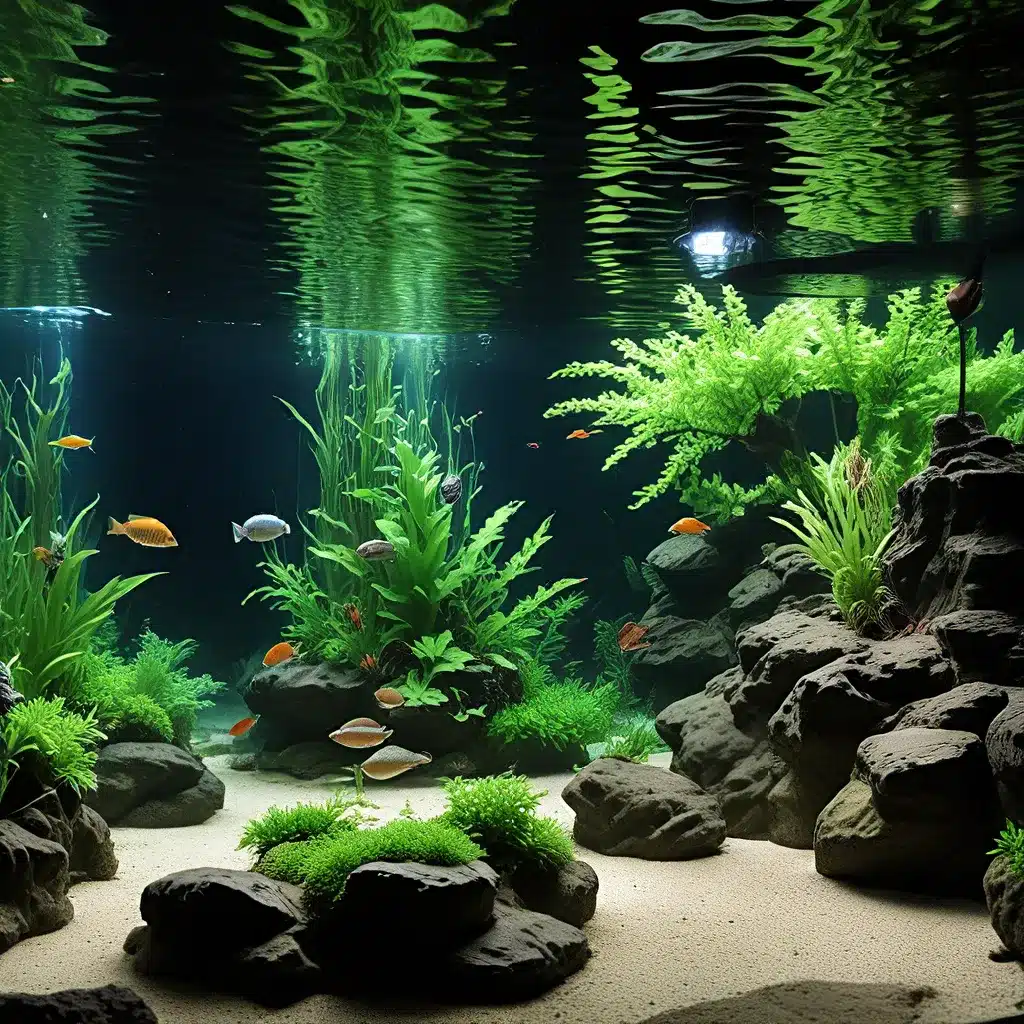
Aquarium enthusiasts know that the right lighting is the key to creating a captivating and thriving underwater ecosystem. Whether you’re setting up a new aquarium or revamping an existing one, understanding the intricacies of aquarium lighting is essential for the health and well-being of your aquatic inhabitants and the aesthetic appeal of your underwater oasis.
The Importance of Aquarium Lighting
Proper lighting is not just about aesthetics; it plays a vital role in the overall functioning of your aquarium. Aquatic plants, fish, and other organisms require specific lighting conditions to thrive and maintain their natural behaviors. Getting the lighting right can make the difference between a vibrant, flourishing aquarium and one that struggles with algae growth, poor plant health, and stressed fish.
King Aquarium is dedicated to providing aquarists with the knowledge and resources they need to create and maintain a captivating underwater paradise. In this comprehensive guide, we’ll dive into the world of aquarium lighting, exploring the different types of lighting, their benefits, and strategies for selecting and setting up the perfect lighting system for your aquarium.
Understanding the Spectrum of Aquarium Lighting
When it comes to aquarium lighting, it’s not a one-size-fits-all solution. Different types of aquatic life have varying lighting requirements, and the right lighting can make all the difference in the health and vitality of your aquarium.
LED Lighting: One of the most popular and widely used lighting options for aquariums is LED (Light-Emitting Diode) technology. LEDs offer a wide range of benefits, including energy efficiency, long lifespan, and the ability to produce a broad spectrum of light. LED lights can be customized to emit the specific wavelengths and intensities that your aquatic plants and fish require, making them a versatile and highly customizable choice.
Fluorescent Lighting: Fluorescent lighting is another common option for aquariums. These lights are available in a variety of color temperatures, from cool, blue-hued bulbs to warmer, reddish-toned bulbs. Fluorescent lights are generally more affordable than LEDs, but they may not provide the same level of control over the light spectrum.
Metal Halide Lighting: Metal halide lighting is known for its intense, bright illumination, making it a popular choice for large, deep aquariums or setups with high-light-demanding plants. These lights produce a wide range of wavelengths, mimicking the natural sunlight that aquatic organisms would experience in their native environments.
Hybrid Lighting Systems: To take advantage of the unique benefits of different lighting technologies, many aquarists opt for hybrid lighting systems that combine multiple types of lights. For example, a setup might include a combination of LED and fluorescent lighting, or LED and metal halide, to create a well-balanced and customized lighting solution.
Choosing the Right Lighting for Your Aquarium
When selecting the appropriate lighting for your aquarium, it’s essential to consider several factors, including the size of your tank, the type of aquatic life you’re keeping, and your desired aesthetic goals.
Tank Size: The size of your aquarium will determine the amount of light required to achieve adequate coverage and intensity. Larger tanks generally require more powerful and extensive lighting systems to ensure that all areas of the aquarium receive sufficient illumination.
Aquatic Life: Different types of aquatic plants, fish, and other organisms have varying lighting needs. Some species thrive in high-light conditions, while others prefer lower-light environments. Understanding the specific requirements of the inhabitants in your aquarium is crucial when selecting the appropriate lighting.
Aquascaping Style: The way you design and arrange the elements in your aquarium, known as aquascaping, can also influence your lighting choices. For example, if you have a heavily planted aquarium with lush vegetation, you may require more intense lighting to ensure adequate photosynthesis and plant growth.
Energy Efficiency and Sustainability: In addition to the functional and aesthetic considerations, many aquarists also prioritize energy efficiency and sustainability when choosing their aquarium lighting. Energy-efficient options, such as LED lights, can help reduce your carbon footprint and lower your electricity bills in the long run.
Lighting Placement and Intensity
Once you’ve selected the appropriate lighting technology for your aquarium, it’s essential to consider the placement and intensity of the lights to ensure optimal results.
Lighting Placement: The positioning of your lights can significantly impact the overall lighting distribution and coverage within the aquarium. Proper placement can help minimize shadows, hot spots, and uneven illumination, ensuring that all areas of your aquarium receive the necessary light.
Lighting Intensity: The intensity of your aquarium lights, measured in watts or lumens, should be tailored to the specific needs of your aquatic inhabitants and plants. Striking the right balance between too much and too little light is crucial for maintaining a healthy and thriving underwater ecosystem.
Aquarium Lighting Maintenance and Troubleshooting
To keep your aquarium lighting system functioning at its best, regular maintenance and troubleshooting are essential. This includes:
Cleaning and Bulb Replacement: Regularly cleaning your aquarium lights and replacing any worn-out or malfunctioning bulbs can help maintain optimal lighting performance and ensure the longevity of your lighting system.
Monitoring and Adjustments: Closely monitoring the effects of your lighting on your aquarium’s inhabitants and making adjustments as needed can help you fine-tune the lighting conditions for maximum benefit.
Troubleshooting Common Issues: Understanding and addressing common lighting-related issues, such as algae growth, plant health problems, or behavioral changes in your fish, can help you maintain a well-balanced and thriving underwater environment.
Conclusion
Aquarium lighting is a critical component of creating and maintaining a vibrant, healthy, and visually stunning underwater paradise. By understanding the different types of lighting, their benefits, and the factors to consider when selecting and setting up your lighting system, you can unlock the full potential of your aquarium and provide your aquatic inhabitants with the optimal conditions they need to thrive.
Whether you’re a seasoned aquarist or a newcomer to the hobby, King Aquarium is here to guide you through the world of aquarium lighting, empowering you to cultivate a captivating and sustainable underwater ecosystem that will captivate and inspire.

